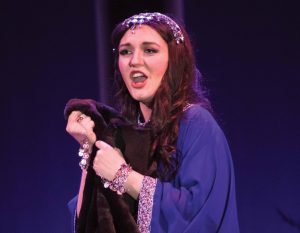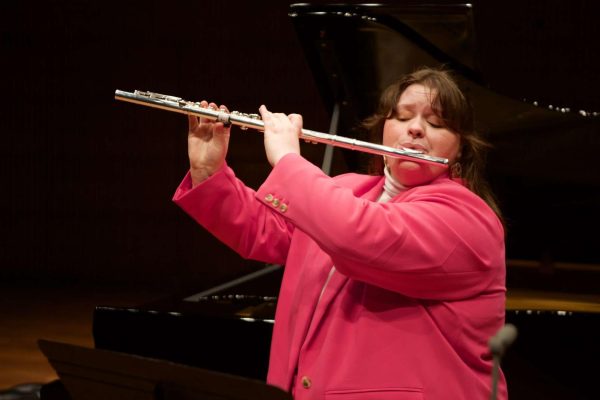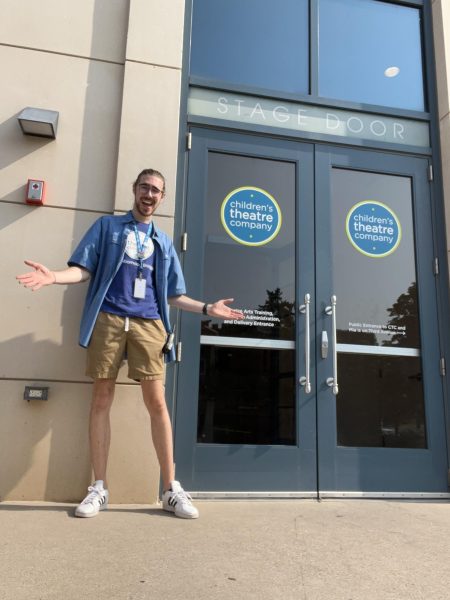‘Serse’ hits an operatic high note
Apr 18, 2019
G.F. Handel’s “Serse” is a three-act Baroque opera, first performed in 1738. On Saturday, April 13, I had the pleasure of viewing UNI Opera’s second, and final, performance of “Serse” in Bengtson Auditorium and was thoroughly impressed by the talent and dedication put into this well-executed show.
The evening began at 7:30 with remarks from UNI Opera’s director, Mitra Sadeghpour. Sadeghpour spoke about the attention to detail put into the production, from the historical influences reflected in the costume and set design, to the plot guides and charts included in the opera’s program. She even told of her personal connection to the play, describing a noisy watermelon-seller she encountered during her childhood in Persia (modern-day Iran). Sadeghpour explained that the only Farsi word in the performance was the word for “watermelon,” said in a market scene during the second act. Her words showed how well-researched the production was, which was exemplified in the performance that followed.
“Serse,” which tells a tale loosely based on the life of Xerxes I of Persia, features a complicated romance plot, difficult Baroque-style music and an entirely Italian libretto. The cast and crew, ranging from undergraduate freshmen to second-year graduate students, demonstrated great understanding of the music and comprehension of the text. Although it was supplemented by summary in the program and English supertitles, the story was truly told through the actors’ expressions and actions as their voices glided through intense, lengthy vocal runs.
The opening aria, sung by junior Hannah Miedema as King Serse, is set to one of Handel’s most famous melodies and brought literal tears to my eyes. The casting for this opera was very unique. There are a number of “pants roles” in this show, meaning that an actor with a soprano, mezzo-soprano or otherwise high vocal range, sings for a male character or a female character disguised in men’s clothing. Miedema — as well as Athena-Sade Whiteside as Arsamene and Madeline Langlitz as Amastre — gave believable, dedicated performances in these pants roles. I was especially impressed by Whiteside’s performance; whose dynamic facial expressions really stole the show for me.
The technical components of the show were stunning. “Serse” takes place in the Persian Empire during 550 B.C. The set, designed by Ron Koinzan, featured a false proscenium that framed the stage with replicas of carvings from Xerxes I’s tomb. The costumes, designed by Danielle Mason, were gorgeous. I especially enjoyed how the young page, played by Ian Jenkins, wore an adorable miniature version of King Serse’s coat.
The talented singers and musicians, under the direction of Rebecca Burkhardt, performed all three acts of complex music with masterful skill and little error. The orchestra sounded beautiful, and I was impressed by the actors’ ability to remain in character while remembering their long-winded lines of music. Baritone Adrian Horras as the servant Elviro and bass Cole Flack as Ariodate provided wonderful contrast in tone, as well as wonderful comedic relief in their acting.
I have the predisposition of being familiar with and loving the operatic genre both dramatically and musically, which puts me at a bit of an advantage for comprehending and appreciating a complicated Baroque opera. However, I went with a friend who had never seen or even considered going to an opera before, and they loved it. We spent the entire intermission chatting about what was going on in the production and how impressed we both were with the production quality. The cast and crew of “Serse” did a wonderful job with the difficult task of not only staging and performing this show, but also making it enjoyable and interesting for their audience.
Bravo, not only to the second night’s cast, but both casts and the crew of “Serse” on a job well done.




















